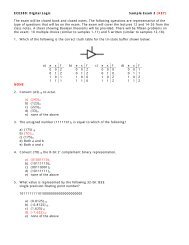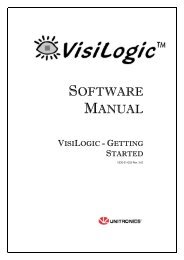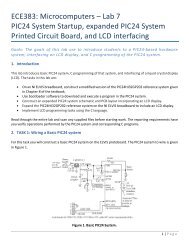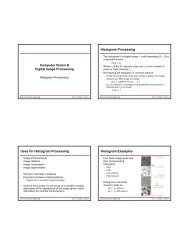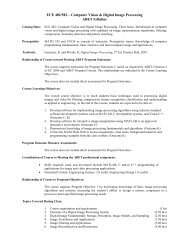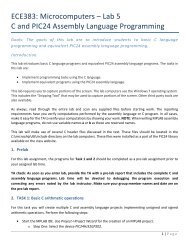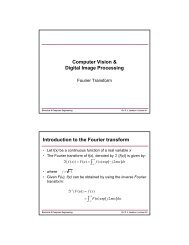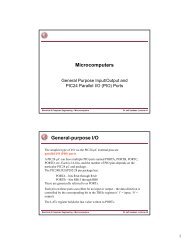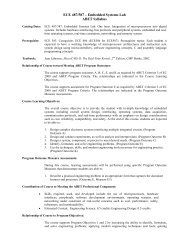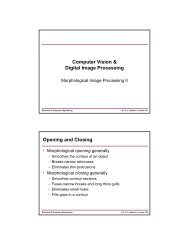DE2-115: User Manual
DE2-115: User Manual
DE2-115: User Manual
You also want an ePaper? Increase the reach of your titles
YUMPU automatically turns print PDFs into web optimized ePapers that Google loves.
stored in EPCS64 device), download the bit stream to the board by using either JTAG or AS<br />
programming<br />
You should now be able to observe that the 7-segment displays are displaying a sequence of<br />
characters, and the red and green LEDs are flashing. Also, “Welcome to the Altera <strong>DE2</strong>-<strong>115</strong>” is<br />
shown on the LCD display<br />
Optionally connect a VGA display to the VGA D-SUB connector. When connected, the VGA<br />
display should show a color picture<br />
Optionally connect a powered speaker to the stereo audio-out jack<br />
Place slide switch SW17 in the DOWN position to hear a 1 kHz humming sound from the<br />
audio-out port. Alternatively, if slide switch SW17 is in the UP position, and optionally<br />
connects the microphone in port with a microphone and/or connects the line-in port with an<br />
audio player's output, you will hear the sound from the microphone or audio player or mixed<br />
sound from both.<br />
The Verilog HDL source code for this demonstration is provided in the <strong>DE2</strong>_<strong>115</strong>_Default folder,<br />
which also includes the necessary files for the corresponding Quartus II project. The top-level<br />
Verilog HDL file, called <strong>DE2</strong>_<strong>115</strong>_Default.v, can be used as a template for other projects, because it<br />
defines ports that correspond to all of the user-accessible pins on the Cyclone IV E FPGA.<br />
6.2 TV Box Demonstration<br />
This demonstration plays video and audio input from a DVD player using the VGA output, audio<br />
CODEC, and one TV decoder (U6) on the <strong>DE2</strong>-<strong>115</strong> board. Figure 6-1 shows the block diagram of<br />
the design. There are two major blocks in the circuit, called I2C_AV_Config and TV_to_VGA. The<br />
TV_to_VGA block consists of the ITU-R 656 Decoder, SDRAM Frame Buffer, YUV422 to<br />
YUV444, YcrCb to RGB, and VGA Controller. The figure also shows the TV Decoder (ADV7180)<br />
and the VGA DAC (ADV7123) chips used.<br />
As soon as the bit stream is downloaded into the FPGA, the register values of the TV Decoder chip<br />
are used to configure the TV decoder via the I2C_AV_Config block, which uses the I2C protocol to<br />
communicate with the TV Decoder chip. Following the power-on sequence, the TV Decoder chip<br />
will be unstable for a time period; the Lock Detector is responsible for detecting this instability.<br />
The ITU-R 656 Decoder block extracts YcrCb 4:2:2 (YUV 4:2:2) video signals from the ITU-R 656<br />
data stream sent from the TV Decoder. It also generates a data valid control signal indicating the<br />
valid period of data output. Because the video signal from the TV Decoder is interlaced, we need to<br />
perform de-interlacing on the data source. We used the SDRAM Frame Buffer and a field selection<br />
multiplexer (MUX) which is controlled by the VGA controller to perform the de-interlacing<br />
operation. Internally, the VGA Controller generates data request and odd/even selection signals to<br />
the SDRAM Frame Buffer and filed selection multiplexer (MUX). The YUV422 to YUV444 block<br />
converts the selected YcrCb 4:2:2 (YUV 4:2:2) video data to the YcrCb 4:4:4 (YUV 4:4:4) video<br />
data format.<br />
78



